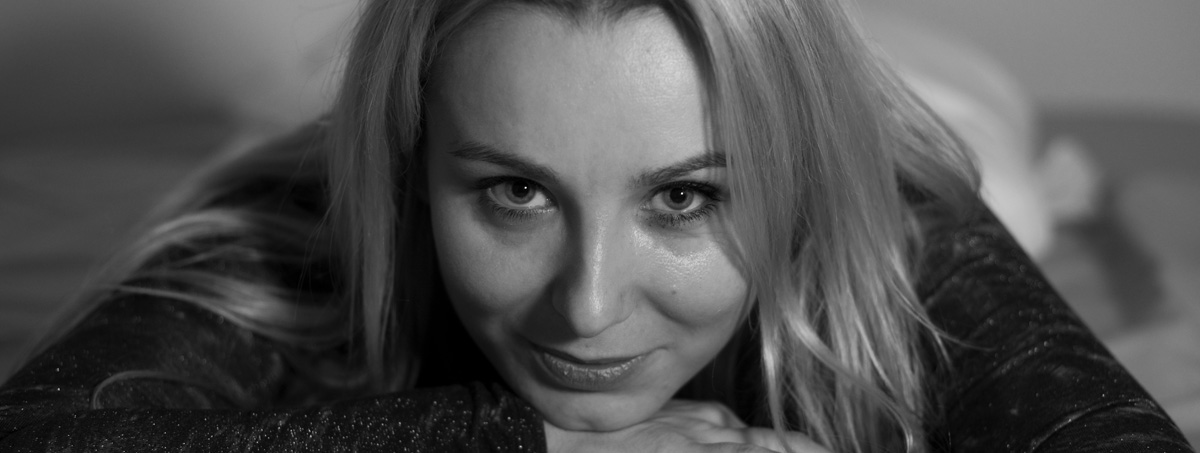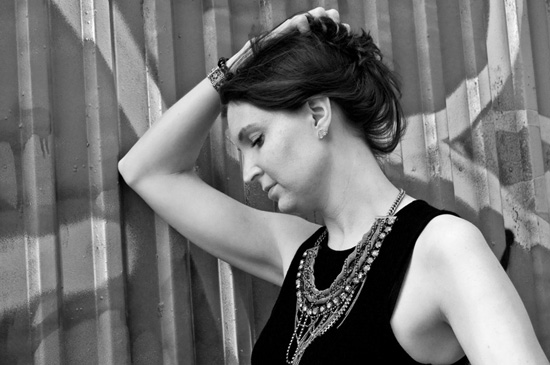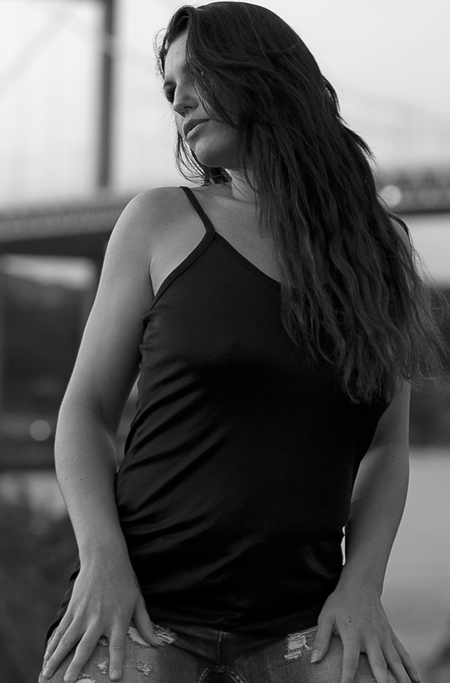Portrait

Portrait photography produces pictures that capture the personality of a subject by using lighting, backdrops, accessories and poses. This is a widely spread definition of a portrait and it makes sense, if you think about it. A portrait is not just a picture of a person, not a snapshot, not random and you should not call any picture with a face in it a portrait. A portrait captures the personality, the essence of a person, or of an animal, for that matter. The idea of a portrait is to say something about a person, that goes beyond the pure appearance. It can never describe the whole person, but it should tell something about a personality and if it is really good, it should make the viewer curious about the subject. A portrait shoot involves of course two personalities: The photographer and the subject! There are many ways to balance those two characters, that work together in a creative process. While the photographer is usually respected to be the authority, tasked with directing the subject and setting up the shot, there must be enough space for the subject to show her own personality. Some photographers plan and style a shot completely, putting the subject into the setting and pose, that the photographer controls and thereby communicating the photographers view on a person without any opportunity for the subject, to alter that view. Annie Leibovitz is probably the most famous example for this type of portrait. On the other end would be a photographer, who reduces her role to a mere observer, giving the subject the most freedom of expression but at the same time putting the pressure of responsibility on the subject as well. A professional model,will probably know, how to pose and what to do, to meet the expectations and needs of the photographer while an amateur will need a little more guidance. Portrait photography has many aspects and it is hard, to squeeze all of them into one article. We go step by step through the definition of different portraits, continue with some technical aspects and finally come to the practical side.
TRADITIONAL PORTRAIT
The Classical portrait usually refers to an image where the face is the predominant element. It shows a person, maybe only the face, maybe half of the body or even a full figure shot. The important part is, that it depicts only the subject itself, focusing on the face and its expression. The background should be really unobtrusive and only help in creating a mood. You can use the lighting and expression of the face together with very few props like jewelry or hairstyle, to create and display the atmosphere in the image.ENVIRONMENTAL PORTRAIT
In this setting, the subject is photographed in an environment, that compliments the person, shows more of her character, displays occupation, passion or life style. An artist in a studio, a worker at the job or a musician playing an instrument are examples for this type of portrait. While you have more freedom regarding props and background, the lighting can be challenging, depending on how much space you want or need to include in the photograph.CANDID PORTRAIT
A candid portrait is taken without a subject knowing about the photographer or his intention.This style used in photo journalism, travel photography, street photography and event photography. This type of portrait is very spontaneous and generally not staged or planned. Even pictures taken during a planned photo shoot, that are taken, while the subject is still preparing, can be counted as candid.GLAMOR OR EROTIC PORTRAIT
This type of portrait aims to emphasize the erotic appeal and sexy character of the subject. This type of photography uses lingerie, boudoir style clothing and props and all types of environment and outfits and it includes nude photography.
LIFESTYLE PORTRAIT
This type of portrait depicts the style, the occupation or the social group of the subject. It shows the way, a person chose to live and arrange her life. Fashion and work portraits as well as home stories and advertising are examples for this type of of images. Blogging uses this type of photographs very often to communicate a certain style or way of live to the audience. It is designed to invoke emotions or the desire to adopt a certain life style or be a part of a social group or community.
Many elements of image composition and manipulation are used within the field of portraiture as well. You will find surreal or abstract portraits, where the photographer wants to show certain elements of a person, that are hidden within her character. As stated in the beginning, it is all about capturing the essence of a person and going beyond the obvious and superficial.
To achieve this goal, you must of course have an idea about that person yourself. What is it, that you want to communicate? The more you understand the person, you want to photograph, the better the chances, to come out with a great shot.
Is it about the face, the expression, a feeling in you subjects eyes? Get close, give the viewer the impression, to be real close to the person in the portrait. Eliminate everything, that can be distracting or is somehow irrelevant. The viewer will notice, if you kept your distance for a good reason or simply, because you where to shy to get close.
 Maybe it is not only the person alone, but something about her life, that you want to tell. Environmental portraits are about people and what they do with their lives. They are about the kind of house a person lives in, about her job, a certain lifestyle or her passion. Often you want to show some of that in your portrait too. This defines the setting of the photograph, you are about to take. Show as much surrounding as needed, show a person, that lives in a certain environment, but make sure, that person gets not lost in it. You will need to include the surroundings, accessories or even other people to tell a story about your subject.
Maybe it is not only the person alone, but something about her life, that you want to tell. Environmental portraits are about people and what they do with their lives. They are about the kind of house a person lives in, about her job, a certain lifestyle or her passion. Often you want to show some of that in your portrait too. This defines the setting of the photograph, you are about to take. Show as much surrounding as needed, show a person, that lives in a certain environment, but make sure, that person gets not lost in it. You will need to include the surroundings, accessories or even other people to tell a story about your subject.
Working with models
If you need a specific type of person for a specific task, it might be a good idea, to work with professional models. You can pick a person, that has exactly the features that you need for the job and you will have a contract, that specifies the terms of usage of the images taken. Especially the latter is necessary, when you want to publish pictures for commercial use and saves you a lot of hassle, if you do it right from the beginning. Models can be found through agencies, on web portals like model mayhem or via their own business, often on social media platforms or individual webpages. Models charge of course for the job, there are different models of compensation, per shot, per hour or other. This means usually, that you will use a professional model only for paid assignments, where you know, that you get the a return on your work, that covers all costs for models, transport and such.
How to......
Apart from candid portraiture, you will have to approach people, get their consent for the picture. For a classic portrait, it may be just the other way around and the person in question is approaching you.There are typically a few reasons why people have photographs of themselves made. Either it is to give people the prints as presents, such as family or baby photography sessions. Or it could be to document a time in someone’s life, such as a graduation or a wedding. Either way, you should tell them, why and how you want to take the picture, talk and maybe joke around with them. It is up to you, to break the ice and make your subject comfortable with the situation. And of course, you must be comfortable yourself, be reassuring to others and be sure about what you want to achieve. Think about how you'd feel if someone approached you and wanted to make a photograph. You will have to decide together, what type of portrait you or that person wants and it is your job, to come up with suggestions regarding location, outfit, props and posture. While a portrait must not necessarily be flattering, it might have to, when you get paid for it. On the other hand, it should not hurt or humiliate anybody. Again, it is about the personality of the people in it, it should reflect character, emotion and attitude of a person. The better you prepare and share your idea about the photograph you want to create, the easier the job will be.The light
The most important thing in any picture is the lighting. Light in photography is like music in a movie: It sets the mood to the picture. Whenever you can, you should control the lighting and set it in a way, that supports your idea of the image best. Prepare as much as possible, before your subject even shows up, since waiting for a photographer fiddling with his gear is the most boring thing in the world and you end up with a bored and tired expression. There are many ways to set up a lighting situation, I will not discuss them all and describe only a basic setting. Use one distinct lightsource for you main light. It can be a lamp or flash or it can be a window, as long as it is the main source of light in your set up. A secondary light can be used to light up the shadow, cast by the main light and finally, you can use additional light for effects such as putting a highlight on the hair or emphasize other features. Reflectors make a good secondary light, if you have only one source of light. Avoid direct sunlight, since it usually causes very hard shadows. It is much easier and more flattering, to use a soft light, either through staying in the shadows or using reflectors, curtains or blinds to diffuse the light. A flash and a reflector go a long way in compensating for bad light situations. Most important is that you know the gear you have, prepare the job and can adapt and change quickly, if necessary.The face
When we speak about portraits, we usually think about the human face as the main feature of an image and the main feature of the human face are the eyes. You should focus on the eyes of you subject and if you go for an extreme shallow depth of field, focus on the eye closest to the camera. When in doubt, use manual focus and make sure, that the focus is, where you want it to be. Equally important is the expression of the face. You will have to explain, what you want to achieve and maybe give your subject some advice, how to change the expression, for example by imagining a certain situation, to help with that. Still, it is you as a photographer, who has to catch the right moment, to capture the exact expression you want to have in your image.The pose
Depending on what you want to achieve, you can give your model some advice on how to pose. Make sure, your lighting allows for some freedom of movement while still give you the desired light effect. It works usually best, to talk about the general idea of the pose and let the model move freely. Just ask, to move slowly to give you time for your shots. Often, the best result lies in between two poses, when a model is a little ‘off guard’ and changing position. Again, keep an eye on the scene in front of the camera and catch the right moment. Explain, why you want a certain pose. Often, a person turns away from the light or moves in a way, that causes hard shadows, that you want to avoid. It helps, to explain things like that and you keep a conversation going which in turn creates a friendly and open atmosphere during the session.
Details Often, details tell a lot about a person, about her lifestyle or occupation. Are there particular parts of the body or items of what they wear that are important and that you want to emphasize in your portrait? Does some part of them really stand out? Can you find a way to abstract what you want to say about the person by using one of theseelements? It might be beautiful hair, the hands of a pianist, the feet of a runner or items like tools, musical instruments or special jewelry, that tells us more about a person. For many people, the body is an extended way to express themselves, through work out, piercings, tattoos and other things. Whenever you are photographing someone, try to think of details of their body or dress that would get your message across in an indirect way. Use these details to make your portrait tell a story about a person. If you are taking photographs of details of the human body, you will be working intimately with people and will have to direct them, tell them how to pose which requires a lot of confidence and trust. But when you do it right, you will get a much better image and come closer to the goal of showing the essence of a person in one picture.